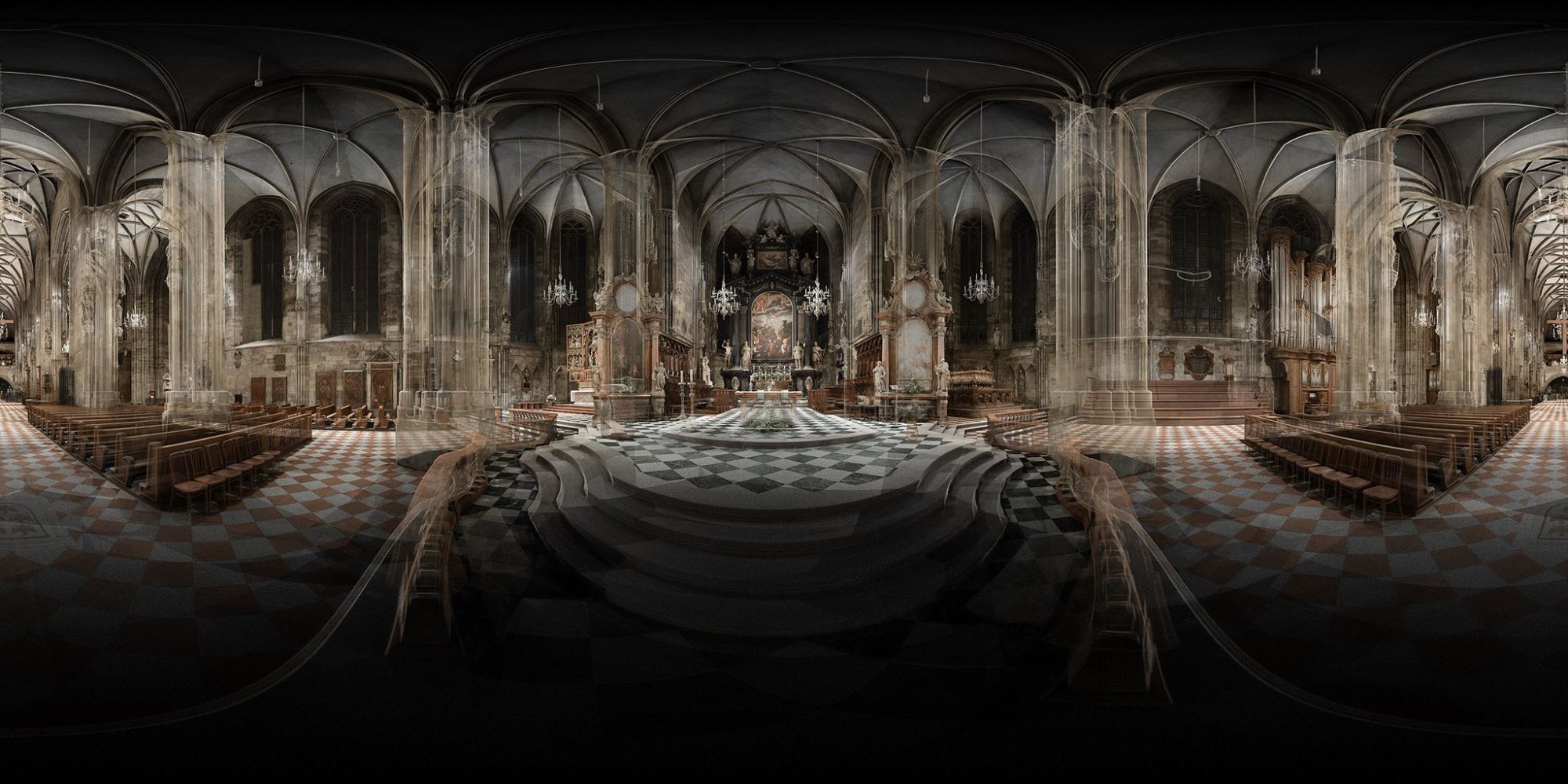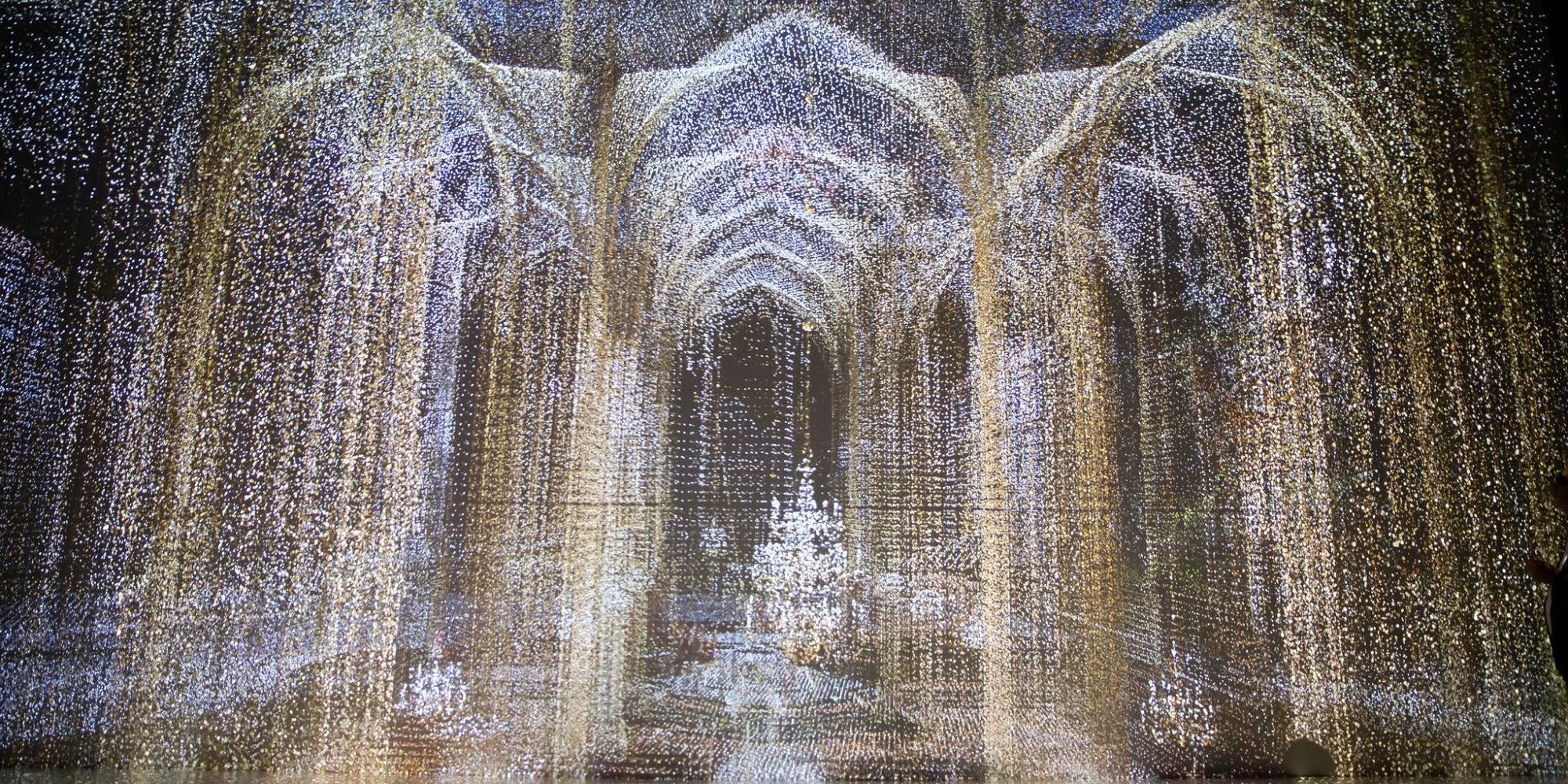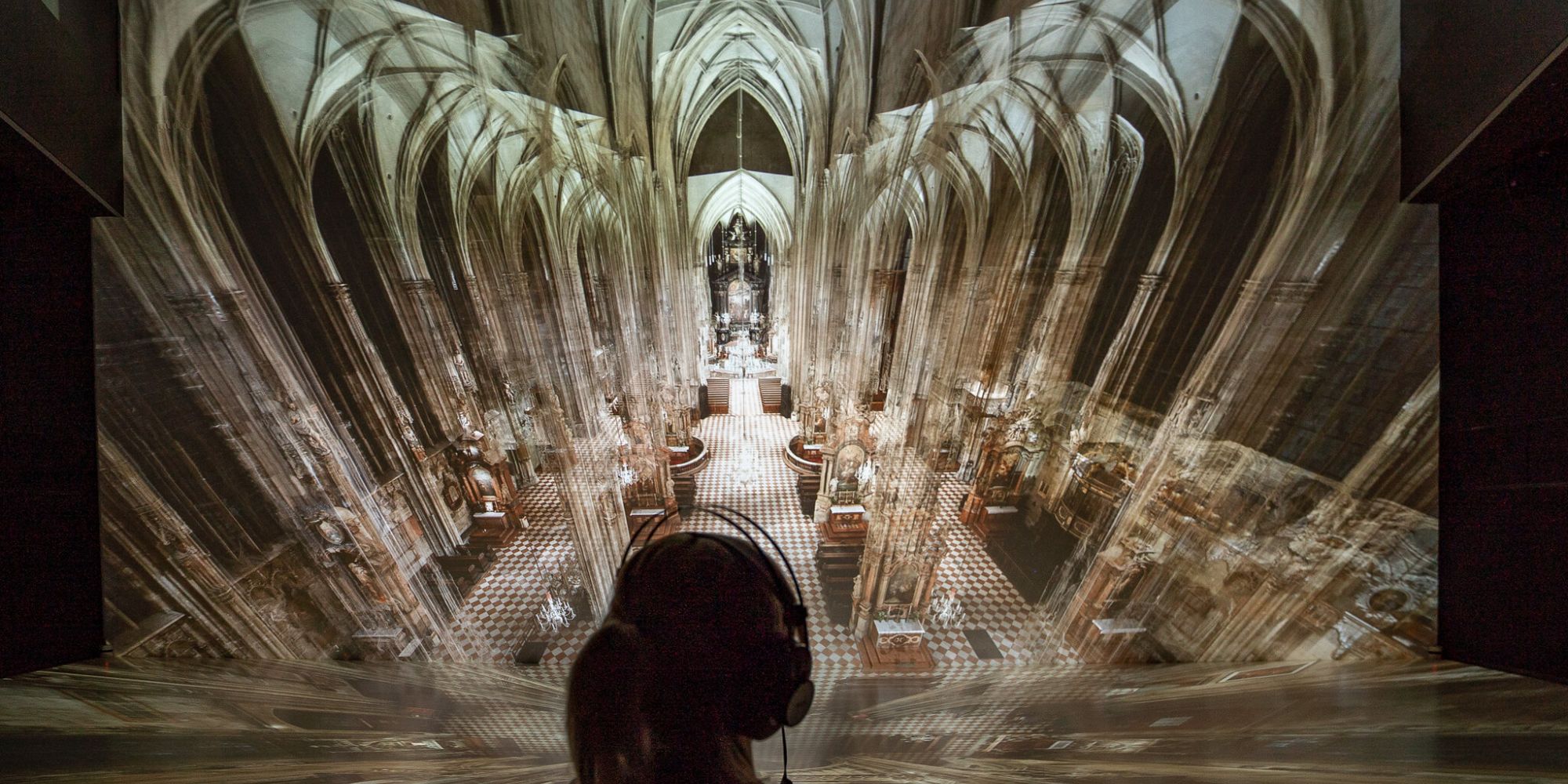As part of the European R&D project Immersify, the data from spatial measurement of St. Stephen in Vienna with more than 21 billion laser points was converted into a translucent representation of the cathedral. The result is an innovative interactive and immersive journey through the building in stereoscopic 8K in the Ars Electronica Center’s Deep Space 8K.
The Translucent St. Stephen’s Cathedral, which was completed in 2020, is a joint effort between the Ars Electronica Futurelab, ScanLAB Projects, RIEGL Laser Measurement Systems, and the Dombauhütte St. Stephan zu Wien. It offers a unique level of detail: the laser points correspond to a data volume of almost 400 gigabytes. The program allows visitors to fly through the cathedral point cloud via real-time rendering and stop at specific points with high-resolution images in 360°.
To achieve the desired high-resolution immersive and interactive experience in real-time in the Deep Space 8K, a combination of techniques is necessary: A low-resolution point cloud is rendered in real-time and combined with an ultra-high-resolution point cloud pre-rendered to 360° stereo images from different perspectives. The user can navigate freely from one point of view to another and thus explore this magnificent building.
The data
The laser points are based on RIEGL Laser Measurement Systems’ point cloud scan of St. Stephen’s in cooperation with the Dombauhütte St. Stephan – intended for preservation and documentation of historically significant buildings. Scanning for four days, more than 1.000 scan positions were recorded with a RIEGL laser scanner, from the church interior and the attic down to the catacombs and out on St. Stephen’s square.
The Futurelab’s vision was to use the data for an interactive Deep Space application as we wanted to explore the cathedral in a new and exciting stereoscopic way. Up to this point laser-scans of this magnitude were only viewable with dedicated computer systems, as working with the huge data set (hundreds of gigabytes) proved extremely difficult. We partnered with the experienced team of ScanLAB Projects to make our vision a reality.
Inside Futurelab: Immersify (The translucent St. Stephen’s Cathedral)
The artistic vision
ScanLAB used the native laser scan data set on their dedicated system while we at the Futurelab were provided with a decimated, lower resolution twin. With ScanLAB crunching the numbers in London, we could artistically explore St. Stephan to find certain points of interest within it’s structure. These locations were then rendered by ScanLAB in different layers of point complexity and density as huge equirectangular textures (30.000×10.000 pixel).
After a first pre-composition by the London team, the Futurelab was provided with these preliminaries. Testing, final composition, color grading and re-rendering as cube maps happened in Linz. The Futurelab built a custom unreal engine application for the Deep Space 8K, using the cathedral’s decimated point cloud data in combination with these ultra-high resolution cube map locations.
Immersify: The Translucent St. Stephen’s Cathedral – Artist Presentation
Immersify was dedicated to developing the next generation of immersive media. From 2017 to 2020 several project partners like the Ars Electronica Futurelab created content for highly immersive environments using various techniques and developing tools for processing the produced data.
Credits
Ars Electronica Futurelab: Friedrich Bachinger, Ivor Diosi, Roland Haring, Anna Kuthan, Johannes Lugstein, Ali Nikrang, Johannes Pöll
PARTNER: ScanLAB Projects, RIEGL Laser Measurement Systems, Dombauhütte St. Stephan zu Wien
The Immersify project has received funding from the European Union’s Horizon 2020 research and innovation programme under grant agreement No 762079.




